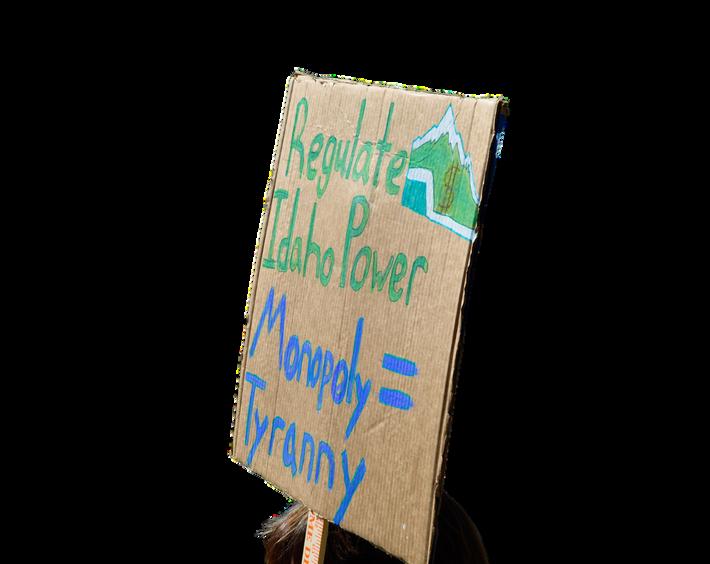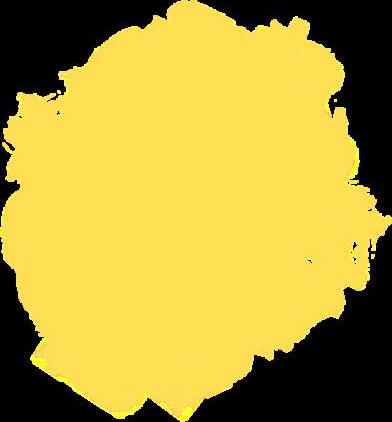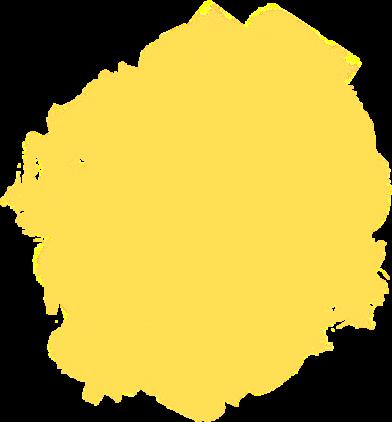A Climate Justice Zine A Climate Justice Zine
 By the Idaho Sierra Club's Youth-Led Climate Justice League
By the Idaho Sierra Club's Youth-Led Climate Justice League




Table of Contents The Climate Crisis Poem: Power and Beauty Poem: Her Future What is Climate Justice? Solar for All Energy Democracy Narrative: Solar in Ian's Community Benefits of Locally-Owned Solar Idaho Power's Attack on Solar Poem: Standing in the Sunlight 3 4 5 7 8 9 11 13 15 17
Our Contributors
Leadership Team & Editors
Sherlyn Mesillas Becerra
Nicholas Thomas
Nikita Thomas
Vienne Aberle

Amanda Reed
Poetry, Artwork, and

Narrative Submissions From:

Melissa Eyer
Amanda Reed
Ian Schlater
Rachael Snyder
Nicholas Thomas
Nikita Thomas
Anise Welty

Helpers
Students from high schools across Idaho, including: Boise, Borah, Capital, Moscow & Skyview
Nikita Thomas
Melissa Eyer
Anise Welty
Front Cover Artwork
2
Melissa Eyer
Power and Beauty AniseWelty













The Climate Crisis
Ourplanetisdying.Aswereleasemoregreenhouse Ourplanetisdying.Aswereleasemoregreenhouse gasseslikecarbondioxideandmethane,moreheatistrapped gasseslikecarbondioxideandmethane,moreheatistrapped iintheatmosphere.Inturn,thisheatsuptheentireplanet,leadingto ntheatmosphere.Inturn,thisheatsuptheentireplanet,leadingto rrisingoceanlevels,thedeathofcoralreefs,andtheextinctionof isingoceanlevels,thedeathofcoralreefs,andtheextinctionof manyanimalsthatwearedependenton.Ifjustafewofthesekeystone manyanimalsthatwearedependenton.Ifjustafewofthesekeystone sspeciesgoextinct,entireecosystemswilldie–andhumanswilldie peciesgoextinct,entireecosystemswilldie–andhumanswilldie withthem.Evennow,wecanseetheeffectsofclimatechange. withthem.Evennow,wecanseetheeffectsofclimatechange.


IIncreasinglyseverenaturaldisasters,wildfires,andairpollution ncreasinglyseverenaturaldisasters,wildfires,andairpollution arealreadyworseningpeople'shealthandsafety–killingmillions arealreadyworseningpeople'shealthandsafety–killingmillions ofpeople,withmarginalizedcommunitiesbeing ofpeople,withmarginalizedcommunitiesbeing hit hit

AccordingtotheUN,wemusteliminate AccordingtotheUN,wemusteliminate carbonemissionstozeroby2050topreventtheworst carbonemissionstozeroby2050topreventtheworst effectsofclimatechange.Thatgivesus27yearstotransitiontoclean effectsofclimatechange.Thatgivesus27yearstotransitiontoclean energy.Ifwewanttoreachnetzerocarbonemissionsby2050,thenwe energy.Ifwewanttoreachnetzerocarbonemissionsby2050,thenwe muststartchangingourenergymakeupnow.Yes,it'stheresponsibility muststartchangingourenergymakeupnow.Yes,it'stheresponsibility ofourgovernmentandbigcorporationstomakethischange.Butwe, ofourgovernmentandbigcorporationstomakethischange.Butwe, tthepeople,mustshowthemtheimportanceofatransitiontoclean hepeople,mustshowthemtheimportanceofatransitiontoclean energy.Wecanchoosewhetherornotwewantourstorytobeoneof energy.Wecanchoosewhetherornotwewantourstorytobeoneof humankind’sinactiontoprotecttheplanet,oroneofhumankind’s humankind’sinactiontoprotecttheplanet,oroneofhumankind’s cooperationandingenuitythat cooperationandingenuitythatssaved avedttheplanet. heplanet.

tthe he hardest. hardest.
Wearerunning Wearerunning outof outof ttime, ime, butallhope butallhope iis s not not llost. ost.
4
Her Future
Written by S






I told my baby cousin.
I told her of the black birds who chirp at the sun to wake up.



I told her she can eat chewy clouds, even drink a cup of sugary rain.
I told her of the woman on the moon who whispers to children about her mystical adventures.
I told her of the streams where she can dip her little f only for it to send a cold bite
I told her only when we sit below the starry sky, we will meet men and women of our past.




I told her to listen to my father’s silly stories: a deer saying hello to hunters and a bear who slept snug for months.
I told my baby cousin about my distant history.
I told her the bird’s empty songs for the sun make our mornings cold.

I told her the clouds are brittle, and a cup of rain tastes of sickly stomach medicine.
I told her the woman on the moon ignores to her I told h when s into th it thro



I told h the sky its sta factori
I told h the mis hunters who can only eat their guns.
I told her, your clothes pass down to your great great great grandchildren. A synthetic heirloom.














I told my baby cousin of her future

6
What is Climate Justice?




Climate Justice acknowledges that advancing human rights and racial justice is essential to fighting the climate crisis.

Marginalized communities – including indigenous communities, communities of color, and low-income communities – are most impacted by the climate crisis, but they are also the most equipped to fight it – and have been doing so for a long time. Climate justice means emboldening and amplifying the voices of these frontline communities in order to fight climate change and ensure that climate activists are working toward a future of equity and justice.

What is Solar For All?


means making solar power more affordable and accessible for everyone––especially low-income and marginalized communities––so that we can all benefit from local solar power. Local solar can lower energy bills, provides grid stability, and keeps benefits like jobs and environmental impacts in communities.
Federal Funding for Solar For All!
Recognizing the need for equitable access to clean solar energy, the U.S. EPA recently launched Solar For All, a $7 billion grant program. This initiative aims to increase access to affordable solar energy for low-income households by providing financial support and incentives.
Through Solar For All, low-income communities can enjoy the benefits of distributed solar, such as cost savings, community ownership, and energy resiliency. Moreover, the program aligns with President Biden's goals of directing 40% of Federal investment benefits to marginalized communities and achieving a carbon pollution-free power sector by 2035 and a net zero emissions economy by 2050.
“Solar for all"
8
What is Energy Democracy?
Energy democracy empowers all people to have a voice in the energy that we have. Currently, our energy system is controlled by corporations who have prioritized the use of fossil fuels to protect their own profits. It is time to make a transition towards clean energy and put the energy in the hands of the people who use it. With energy democracy, we can lift up the voices of those who are continuously marginalized and make strides in social and economic justice by returning ownership and control of energy to the people.
SPOTLIGHT: COMMUNITY SOLAR
Community Solar is when the solar panels are located directly in a community (on a community center, school, etc.) and collectively owned by the community (a cooperative, nonprofit, etc.), not the utility. Often times residents including folks who live in apartments or can't afford to buy solar on their own—can "subscribe" to the Community Solar site to help pay for a portion of the costs and then earn credits on their power

Energy Democracy is therefore a climate solutions strategy: it’s about local communities taking into their own hands the responsibility of building a cleaner and more equitable energy future.







 Nicholas Thomas
Nicholas Thomas
Energy Democracy Project 10
Solar in My Community
Ian Schlater


Recently, I've experienced firsthand the effects of the climate crisis, such as drought, flooding, heavy rain, and hail, which has reduced crop yield in the Palouse region that is detrimental to the local economy. These extreme events have become the norm throughout the year, discouraging outdoor adventures and ecotourism, key revenue sources for many Idaho communities. Concerned about our changing climate, I researched the energy sector and discovered the harmful effects of fossil fuels and toxic emissions on our environment, leading me to explore solar panels as a solution. During a semester-long research project, I embarked on learning about solar and its benefits for communities through interviews with solar installers, utilities, homeowners, and those opposed to renewable energy.
Solar energy is a clean, renewable energy resource that uses the Sun's photons to generate electricity via solar panels. These can be placed on the roofs of houses, businesses, schools, and any piece of mostly flat land, but often require newer roofing and are most efficient when facing South, unshaded. These constraints limit many homeowners who don't have the ideal roof for a rooftop solar array, and individuals who rent, live in apartments or shared housing often don't have ownership or control over their roof space to install solar panels. Despite these barriers, solar offers reliable electricity, reduced energy bills due to credits given for excess electricity produced, and the knowledge that you are contributing to a more sustainable energy grid. Solar panels can also shade your roof, keeping your house cooler in the summer, which is especially important given the extreme heat many are facing now.
Ian stands next to a solar array in his community!

The high cost of solar panels remains a barrier, despite declining prices of solar panels over time. During my research project, I wanted to assess how costly it would be to install solar panels on my house. I estimated that the small section of the roof which faces South and can hold 15 solar panels would cost roughly $18,000-$22,000, including labor an unattainable price for many. Existing incentive programs federally, and within the state of Idaho, lower the overall cost but continue to be unreasonable for low-income individuals and most homeowners. During my research and interviews with homeowners, they consistently emphasized the need for additional incentives to install solar panels.

Although I was unable to install solar panels on my house due to the cost, I advocated for my school district to do so. Solar panels on a school would be used as educational resources, could spark conversations in the community, and reduce electricity costs. Through conversations with city representatives, grant providers, and community members, we were able to set aside funding and embark on the initial steps to installing a solar array. Recently passed by Congress, the Inflation Reduction Act increases incentives for schools, cities, non-profits, corporations and many others. We all must advocate for these types of funds to support clean electricity in our workplaces, schools, and communities.
To ensure a just and sustainable transition to clean energy, investments in solar for low-income communities are crucial, as everyone must be involved in the shift toward renewable energy to combat harmful emissions and preserve the outdoors. I urge you to consider how you can best support this transition. Will you advocate for equitable solar?
12
Benefits of Rooftop
Solar energy is abundant, sustainable, and renewable! There are


#1 - Savings
Investing in solar provides people with the ability to save money in the long run, including lower power bills & "free" energy from the sun! Locally owned solar also cuts costs for the utility company, lowering energy demand on the power grid (particularly on hot, sunny summer days) and reducing the need to build more power plants & power lines, which keeps rates low for ALL customers.
#2 - Racial & Economic Justice
Rooftop and community solar allow local community members to own small solar power plants, rather than renting energy from utility-owned power plants. Just like homeownership, solar ownership is an opportunity for folks to build long-term wealth for their families, something often only available to rich, white homeowners. When done right, local solar can open that door to BIPOC and low-income communities, too.
#3 - Environment & Health
More energy produced with clean solar power means less from polluting fossil fuels like coal and gas, significantly reducing carbon emissions as well as other harmful pollutants such as nitrogen oxides. This helps mitigate the climate crisis and reduce local air pollution that impacts people's health. Local solar is a way for communities to take action on these issues without having to wait for the utility company to do so.

& Community Solar!
many, many benefits of rooftop and locally owned solar including:
#4 - Energy Security



Small, decentralized power plants like local solar allocate energy differently than large, centralized power plants. This provides energy security & reliability to solar owners when blackouts occur. This is especially important amidst the increase in climate-fueled natural disasters that impact our power grid and for critical facilities like hospitals.
#5 - Boost Local Economy

AmandaReed
Local solar production creates more local jobs in the clean energy sector. Jobs range from solar panel installer to solar factory worker, which are often good, union jobs. Those local workers then turn around and buy goods & services in their community, keeping those dollars in the local economy.
#6 - Empowerment
Local solar power not only provides electric power to local families, businesses, farms, schools & communities, it provides social and political power to those same people and groups. Folks can have a greater say in where their energy comes from, how it's produced, who can benefit from it, and how those benefits are distributed. Utility-owned energy sources leave most of those decisions to corporate executives and shareholders with limited chances for public input.
14
Idaho Power's A
Idaho Power is trying to limit locally-owned solar power through its recent proposals at the Idaho Public Utilities Commission. These changes are designed to attack local solar owners ’ yearly power bill savings from multiple angles. We will fight back and demand fair compensation rates and fees for all Idahoans!
Idaho Power's Plan Year One

Reduce the solar export credit rate from an average of 8.8¢ to 5.96¢ (per kWh), up to a 14% reduction in power bill savings for most systems Triple the fixed service charge fee on all residential power bills from $5/mo to $15/mo, decreasing annual power bill savings for solar owners by nearly 20% After the First Year Allow Idaho Power to further decrease compensation rates each year with no forecast ahead of time Increase the fixed Service Charge fee to $35/mo (one of the highest in the nation) after 3 years

Attack on Solar
The Issues with Idaho Power's Proposals


Idaho Power’s proposals are not fair to local solar owners.
Idaho Power is using inaccurate data and methods to determine their compensation rates. They don't take into account the full range of quantifiable values that rooftop solar has on our grid, communities, and environment.
Rooftop and community solar owners should be compensated fairly for the energy and grid stability they provide.
Idaho Power’s proposals would further disadvantage low-income customers.
It's already incredibly difficult for low-income customers and communities to own and benefit from local solar power. Increasing the fixed Service Charge and decreasing the solar export credit rate would only add additional barriers. The Inflation Reduction Act (IRA) outlines the importance of centering low-income, frontline communities in our solar programs. Idaho Power’s proposed changes would take Idaho a step backward from this federal goal.
To combat the climate crisis and empower low-income, frontline communities, we must work to make rooftop solar energy more accessible, not less.
16







Find us on Instagram: @IdahoClimateJusticeLeague idaho.chapter@sierraclub.org
The Idaho Climate Justice League is a youth-led group of climate activists within the Idaho Chapter Sierra Club. They're a dedicated team of climate advocates positioning themselves at the forefront of change to tackle the threat of the climate crisis and its effects on the stability of their future. They advocate for bold, grassroots action toward climate justice and a clean energy future for all!









 By the Idaho Sierra Club's Youth-Led Climate Justice League
By the Idaho Sierra Club's Youth-Led Climate Justice League



















































 Nicholas Thomas
Nicholas Thomas























